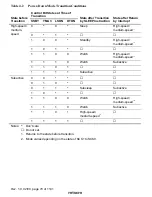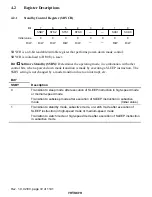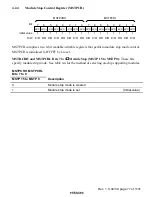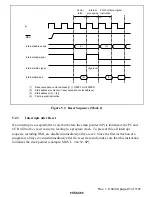
Rev. 1.0, 02/00, page 78 of 1141
4.3
Medium-Speed Mode
When the SCK1 and SCK0 bits in SBYCR are set to 1 in high-speed mode, the operating mode
changes to medium-speed mode at the end of the bus cycle. In medium-speed mode, the CPU
operates on the operating clock (
φ
16,
φ
32 or
φ
64) specified by the SCK1 and SCK0 bits. The on-
chip supporting modules other than the CPU always operate on the high-speed clock (
φ
).
In medium-speed mode, a bus access is executed in the specified number of states with respect to
the bus master operating clock. For example, if
φ
16 is selected as the operating clock, on-chip
memory is accessed in 16 states, and internal I/O registers in 32 states.
Medium-speed mode is cleared by clearing the both bits SCK1 and SCK0 to 0. A transition is
made to high-speed mode and medium-speed mode is cleared at the end of the current bus cycle.
If a SLEEP instruction is executed when the SSBY bit in SBYCR and the LSON bit in LPWRCR
are cleared to 0, a transition is made to sleep mode. When sleep mode is cleared by an interrupt,
medium-speed mode is restored.
If a SLEEP instruction is executed when the SSBY bit in SBYCR is set to 1, and the LSON bit in
LPWRCR and the TMA3 bit in TMA (Timer A) are both cleared to 0, a transition is made to
software standby mode. When standby mode is cleared by an external interrupt, medium-speed
mode is restored.
When the
5(6
pin is driven low, a transition is made to the reset state, and medium-speed mode is
cleared. The same applies in the case of a reset caused by overflow of the watchdog timer.
Figure 4.2 shows the timing for transition to and clearance of medium-speed mode.
Medium-speed mode
Internal
φ
,
supporting module clock
CPU clock
Internal address bus
Internal write signal
SBYCR
SBYCR
Figure 4.2 Medium-Speed Mode Transition and Clearance Timing
















































